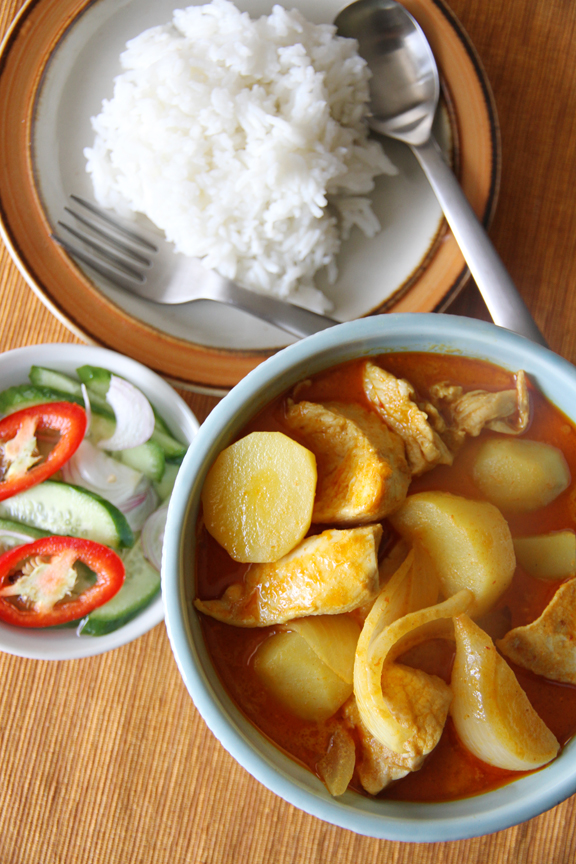
Kaeng Kari Chicken with Rice and Ajat
Of all the recipe requests that have come into my mailbox, the so-called “yellow curry” has got to be one of the top five. I’ve written about it in my weekly column on Serious Eats. But before you head over there, there are two remarks I’d like to make:
1. Nobody in Thailand calls this curry, “yellow curry” (kaeng lueang). If you order kaeng lueang (a name which leads to another possible confusion — more later) in Thailand, you’ll definitely get a different curry. I’d stick with calling it, “kaeng kari.” It’s a funny name, because literally it says, “curry curry.” But at least, there’s no confusion. Knowing that there are two curries that aren’t always clearly distinguished from one another helps you to avoid the mistake of not only ordering the wrong kind of curry at a restaurant, but also buying the wrong kind of curry paste.
2. Kaeng kari is almost always served with a small bowl of ajat in Thailand — the same kind of cucumber relish that comes with your satay. Even though most Thai restaurants overseas don’t do so, you may want to try it. The acidity of the vinegar, the cool and crunchy cucumber, the bite of the shallots, and the heat from the fresh pepper help kill the unpleasant feeling/flavor of “lian” (เลี่ยน) — a Thai word used to describe a rich, oily, and mostly bland-ish (for the Thai standard, anyway) dish.
Here’s a very basic recipe for kaeng kari made with boneless, skinless chicken breasts. Not exactly my favorite cut of meat for this particular curry, but it seems to work for a lot of people.













